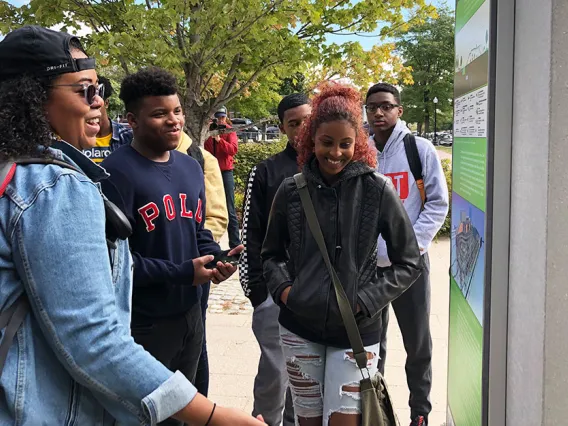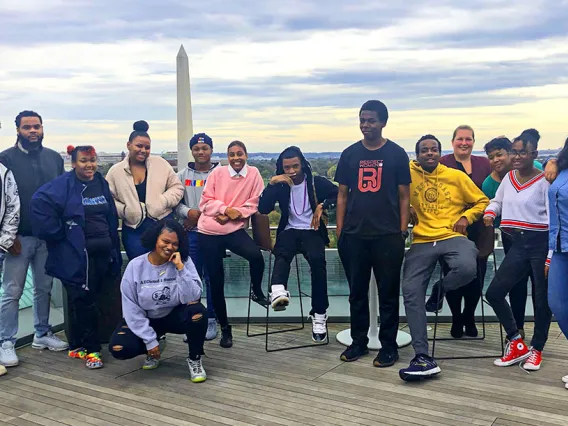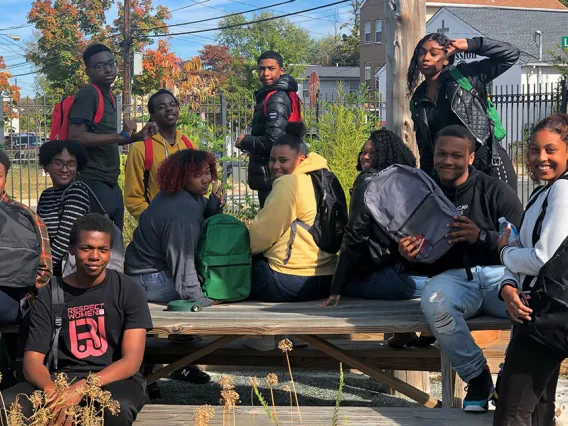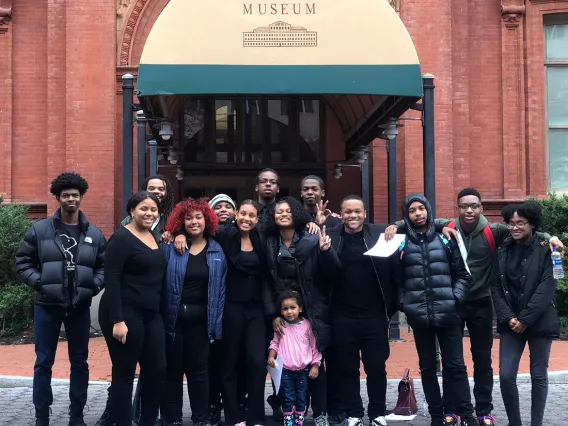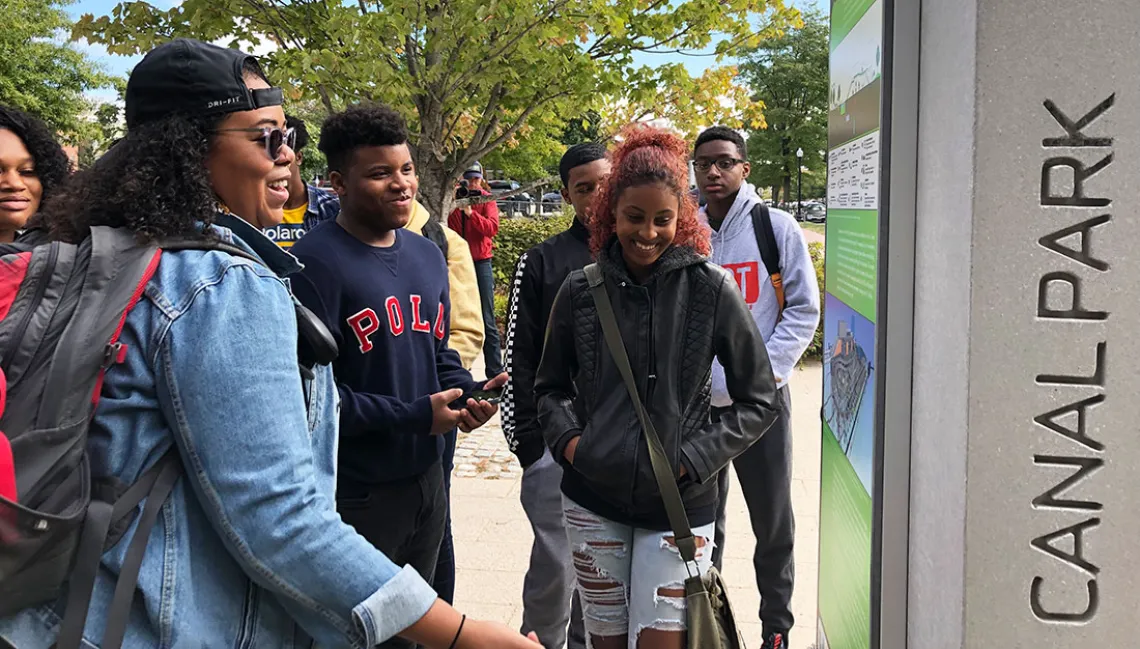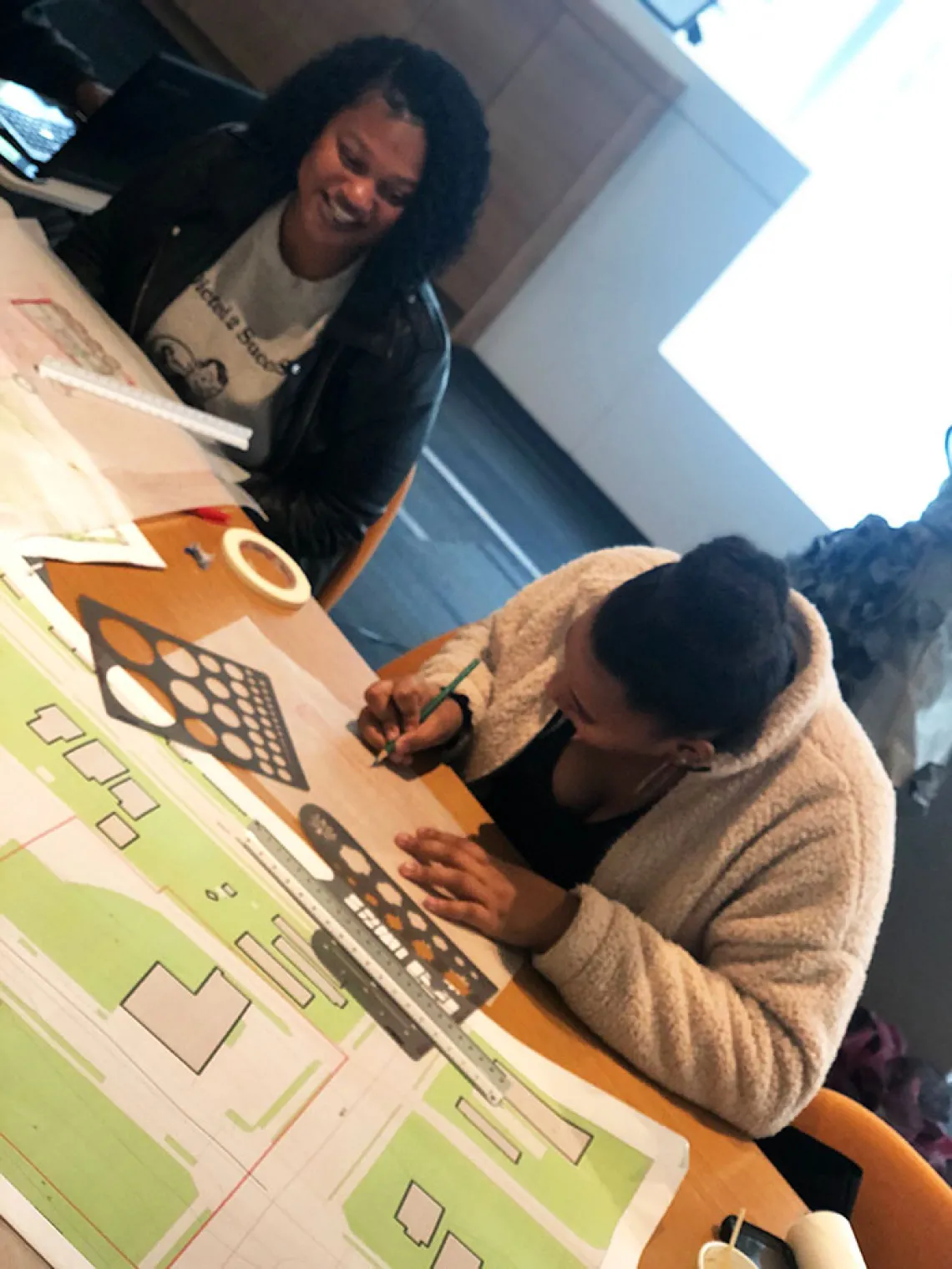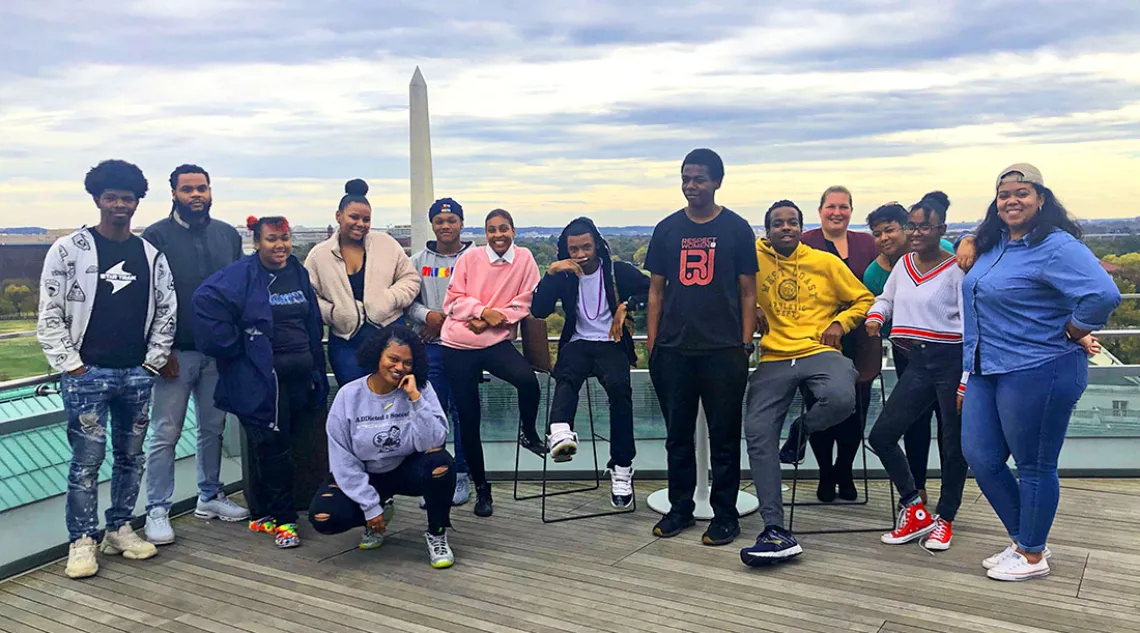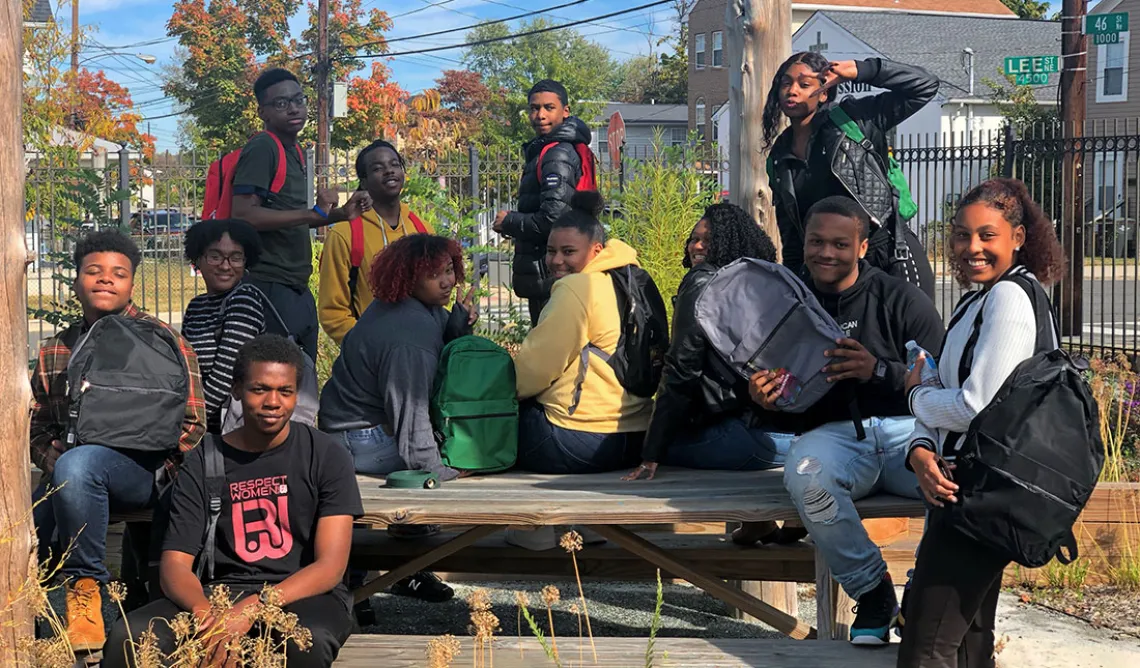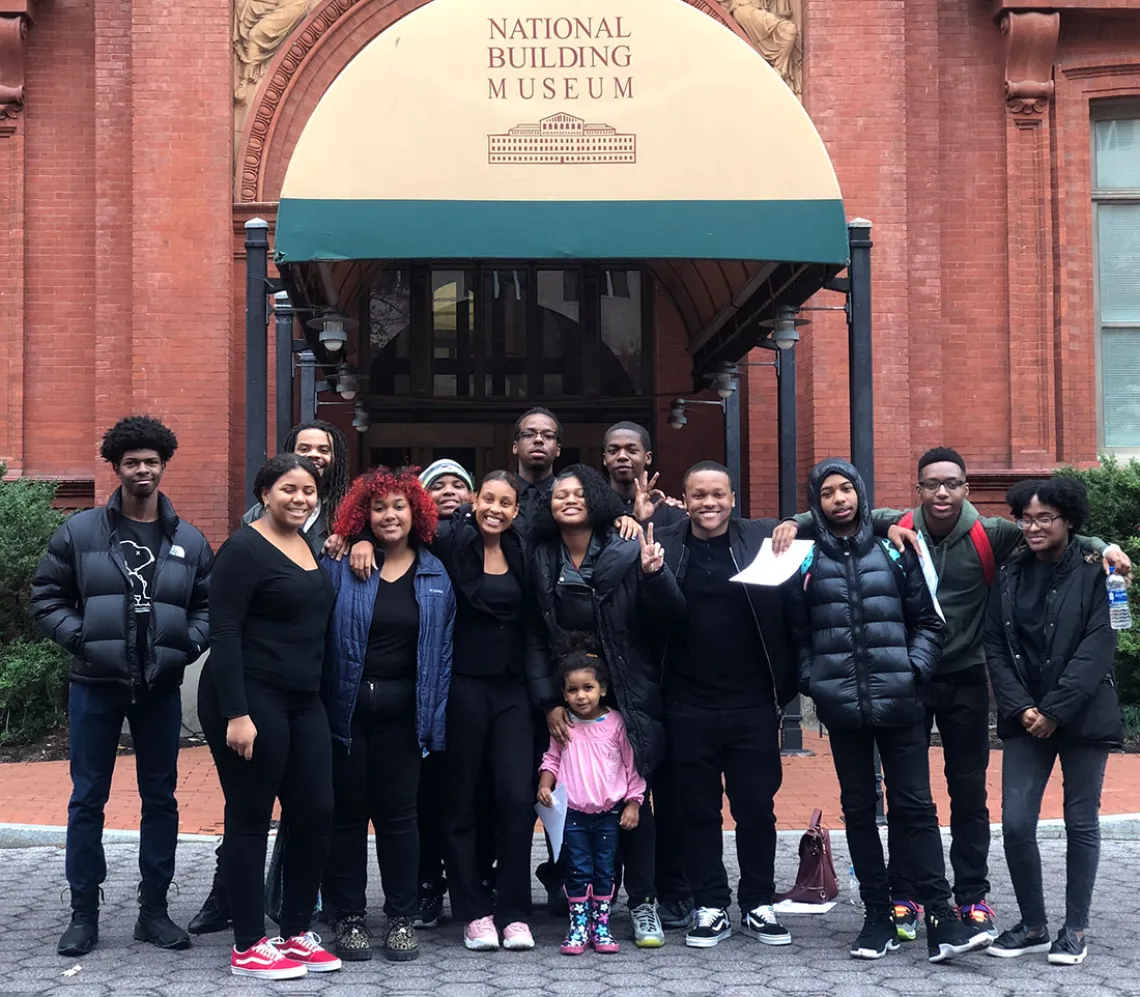Ensuring Equity, Building Community: Kendra Hyson ’15 MLA
Kendra Hyson, Associate Planner and Urban Designer, SmithGroup and Founder and Board President, The Urban Studio
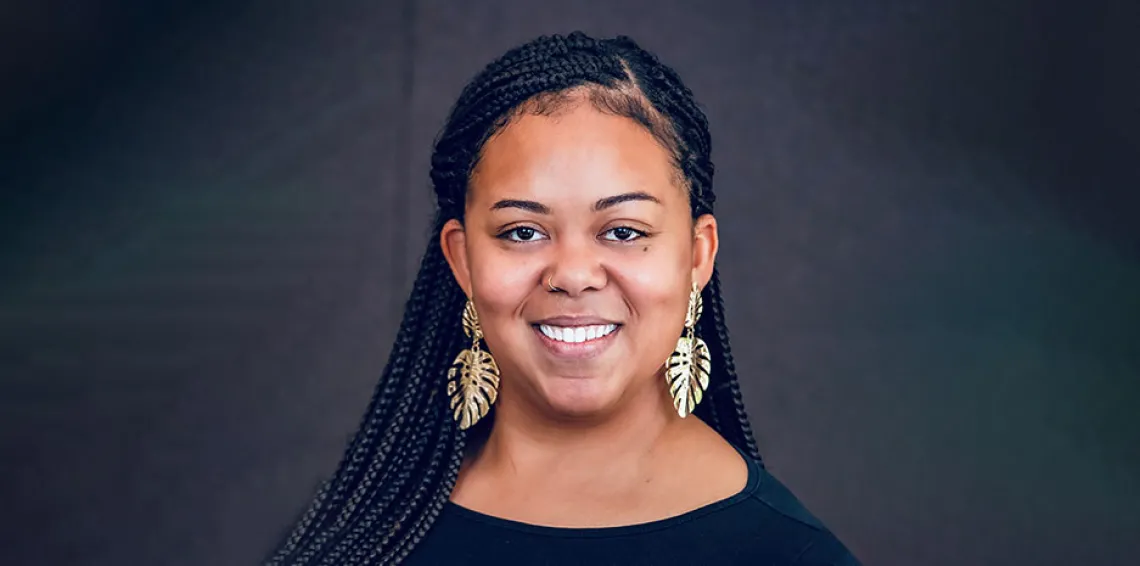
Kendra Hyson ’15 MLA knew one thing right away when she arrived in Tucson from Washington, D.C. to start the University of Arizona Master of Landscape Architecture program: she had to get out of her black leather sandals. The Sonoran Desert August heat was too much.
Fortunately, a quick change of shoes was the only negative for the sculptor and installation artist who had never been to Arizona before.
“My thinking was that if I didn’t like it, I could leave,” Hyson says. “But I ended up loving it. I now rave about Tucson to my colleagues here in D.C. and Maryland, and I thoroughly enjoyed my experience at Arizona. Those three years were some of my most formative—some of my best memories.”
What she didn’t know when she started the MLA was how it would transform her, enabling a path to leadership not just in landscape architecture but also in the movement for social equity in built environment design—as both a founder of The Urban Studio and in her current role as a landscape architect and planner for the Maryland-National Capital Park and Planning Commission (MNCPPC).
Still, landscape architecture wasn’t on the horizon for Hyson when she graduated in 2011 from Spelman College, an all-women’s historically Black college and university (HBCU) located in Atlanta—though the seed may have been planted when she participated in an artist residency with Spelman professor Arturo Lindsey at the Taller Portobelo Norte in Portobelo, Panama the summer before her senior year.
“As I considered contemplative spaces, where people could gather in the rainforest, it was clear to me that the people, culture and scenery of Panama were the inspiration behind my installation,” she says. “That grew into an interest in environmental installation art and sustainable eco-tourism.” It was that interest, plus a recommendation from a colleague when Hyson was working for the Department of Parks and Recreation in Washington, D.C., that led her to consider landscape architecture master’s programs.
Given her immersive experience in Panama, Hyson came to the College of Architecture, Planning and Landscape Architecture intending to study sustainable tourism. “But after starting the program,” she says, “I became interested in community-based design, and particularly designing with instead of only for people.”
Community is at the heart of what she found most rewarding in the MLA, as well. “The MLA program had a familial feel. I was highly supported and encouraged by my professors and had a deep sense of comradery with my classmates.” Plus the program “greatly prepared me for professional life outside of the university.”
After earning her MLA, Hyson worked for the landscape architecture firm LandDesign, Inc., an excellent experience but one where she realized private practice was not for her. So she joined the Neighborhood Design Center in Prince George’s County, Maryland. “And that’s where I furthered my passion for community engagement—for taking landscape architecture beyond the realm of just the built and natural environments to also consider the social and political implications of our designs,” she says.
In 2017 Hyson joined the board of directors for the Landscape Architecture Foundation (LAF) as the Olmsted Scholar’s representative. LAF is a nonprofit organization that “works to increase the capacity, influence and impact of landscape architects to create a more sustainable, just and resilient future.”
She credits that appointment in part to being named the 2015 University Olmsted Scholar for the University of Arizona. Olmsted Scholars is an LAF program that supports landscape architecture students with exceptional leadership potential. The scholarship was “an amazing steppingstone for me,” she says, and on the LAF board she was able to “learn a lot from renowned, seasoned landscape architecture professionals who have since become really great colleagues.”
Though Hyson’s term on the board has ended, it was influential in her co-founding of The Urban Studio with her colleague Maisie Hughes, a 2018 LAF Leadership and Innovation Fellow. The Urban Studio is a nonprofit organization run by a cohort of landscape architects of color who aim to halt the historical system of development happening in communities of color without consideration of the people who live in those communities.
“Our mission is to advance design thinking for equitable and sustainable urbanism,” she says. “That is something we united around—addressing the problems that result in displacement and gentrification while also creating a model for mentorship and transformational leadership.”
“There’s a quote by Frederick Douglass, who says, ‘It’s easier to build strong children than it is to fix broken men.’ I take that to heart,” she says. “So, my objective for The Urban Studio has been to engage communities of color with a particular focus on younger generations, and to inspire them to become landscape architects, planners and engineers—and get involved in the shaping of their communities and their world.”
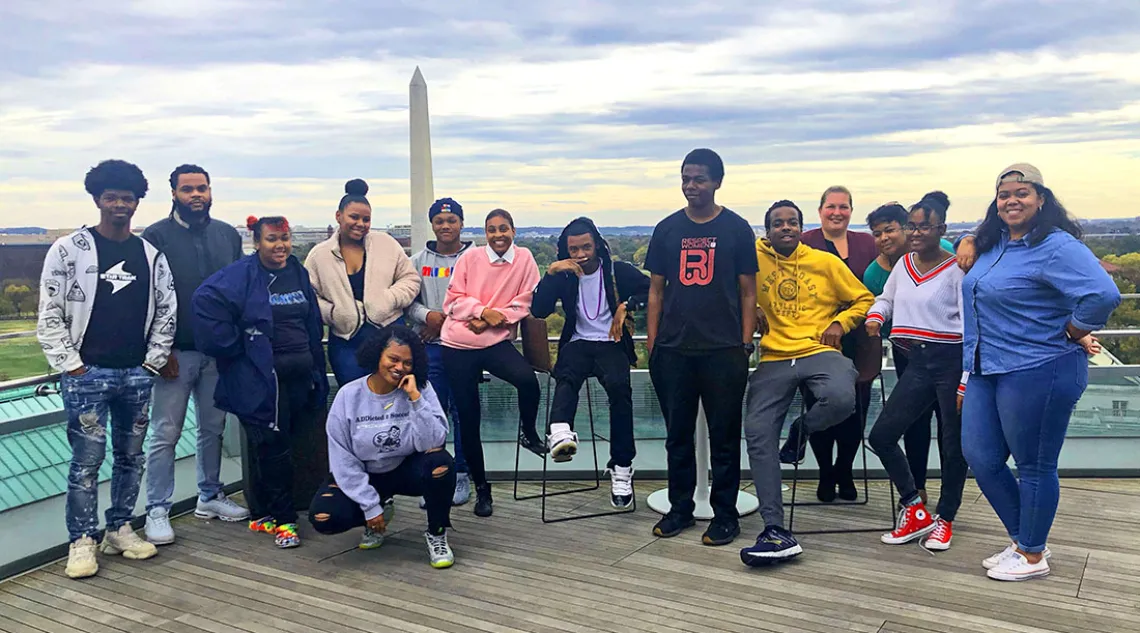
Washington, D.C. high school students in the inaugural stormwater solutions project by the The Urban Studio. Photo courtesy Kendra Hyson.
And her work with the other leaders of The Urban Studio has made a real difference. Their first project—which occurred in the fall of 2019 and received support from the D.C. Department of Energy and Environment, SmithGroup, Howard University and the National Building Museum—brought together 10 African-American high school students from historically underrepresented areas, “which also happen to be some of the most polluted watersheds of the city.”
Over 10 weeks, Hyson and her colleagues worked with the students to design innovative stormwater solutions to challenging scenarios across the community, culminating in presentations by the students to city and other representatives at the National Building Museum. “It was an eye-opening experience to work with these really brilliant young people,” says Hyson.
This summer, The Urban Studio partnered with Ink Landscape Architects to offer CUT|FILL 2020: An Unconference on Landscape Architecture. “As landscape architects and designers, we have such great insight and such a unique skillset that allows us to look not only at built and natural forms, but also the social and political systems that really run our world,” Hyson says. “We must cut the old ways and systems of thinking, including the male- and white-dominated structures complicit in gentrification and displacement, and infill with equity, collaborative design and deep engagement with communities as the way to get the best possible solution for all of us.”
Between her full-time job as an associate planner and urban designer for SmithGroup, an extension of MNCPPC, and position as board president at The Urban Studio, how does Hyson do it all? “Sleep comes when it can,” she jokes. “But in truth, it’s about collaboration—sharing the work with others, finding support and taking advantage of available resources.”
Hyson has not only taken advantage of resources but also created her own opportunities to further equity and social justice in landscape architecture—just as she now creates these opportunities for the younger generation. For Hyson, ensuring equity is all about building sustainable community.
The Urban Studio Gallery
View images from The Urban Studio's 2019 innovative stormwater solutions project with African-American high school students from historically underrepresented areas in Washington, D.C. Click an image to view in larger size and begin slideshow:
All photos courtesy Kendra Hyson.

